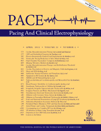Effects of Rosuvastatin on Serum Asymmetric Dimethylarginine Levels and Atrial Structural Remodeling in Atrial Fibrillation Dogs
Authors Jingjie Li and Wei Xia contributed equally to the manuscript.
Conflict of interest: None.
Abstract
Background: Circulating asymmetric dimethylarginine (ADMA), an endogenous nitric oxide synthase inhibitor, is increased in atrial fibrillation (AF). The purpose of this study was to investigate the effects of rosuvastatin on serum ADMA levels and atrial structural remodeling in AF dogs induced by chronic rapid atrial pacing.
Methods: Twenty dogs were randomly divided into the sham-operated (n = 6), control (n = 7), or rosuvastatin (n = 7) groups. Sustained AF was induced by rapid pacing of the right atrium at 400 beats per minute for 6 weeks. Rosuvastatin was administered orally (1 mg/kg d) for 3 days before rapid pacing and was continued for 6 weeks. Transthoracic and transesophageal echocardiography were performed to detect left atrial structure and function. Serum levels of nitric oxide and ADMA were measured. Interstitial fibrosis and cardiomyocyte apoptosis in the atria were also identified.
Results: After 6 weeks, compared with the control group, dramatic smaller left atrium and left atrial appendage volumes and higher atrial contractile function were observed in the rosuvastatin group. Serum nitric oxide concentration was increased, whereas ADMA was decreased in the rosuvastatin group compared with the control group. The percentages of interstitial fibrosis and atrial apoptosis in the control group were significantly higher than those in the sham-operated group, and rosuvastatin attenuated these changes induced by atrial rapid pacing.
Conclusion: A short course of rosuvastatin treatment decreased apoptosis and prevented atrial structural remodeling in association with a decrease in ADMA levels in AF dogs. PACE 2012; 35:456–464)




